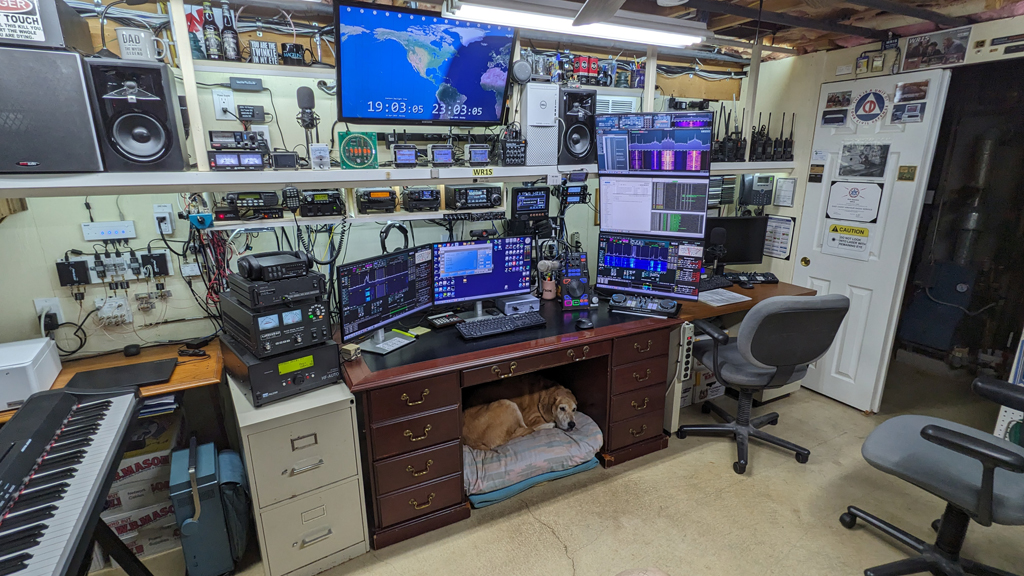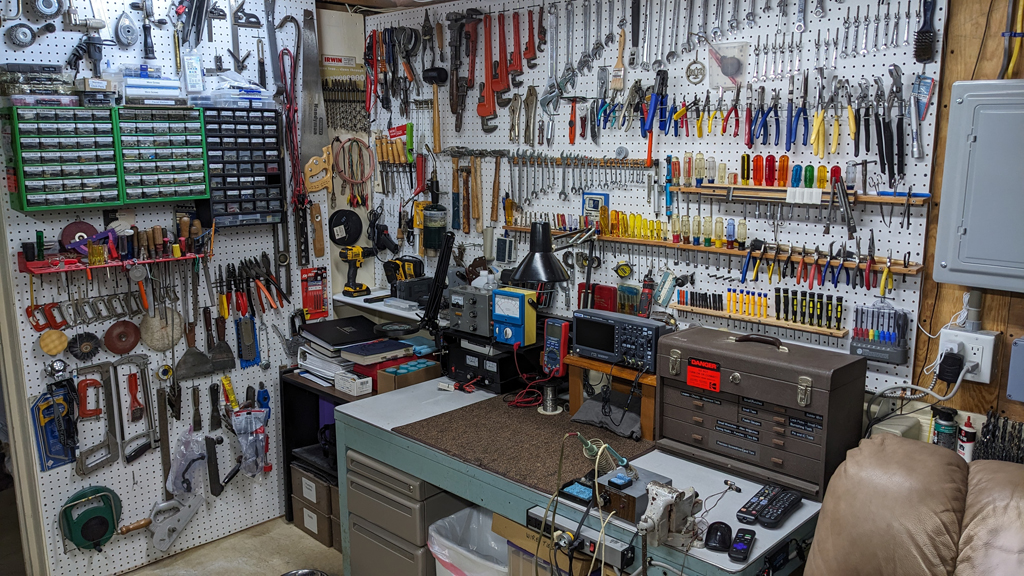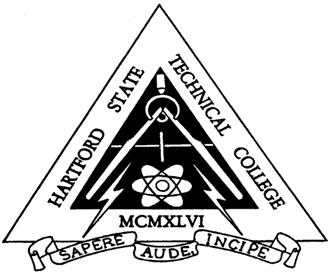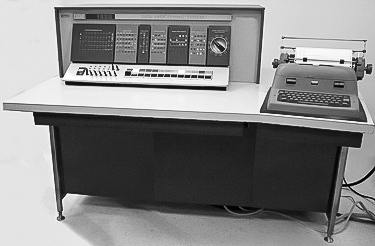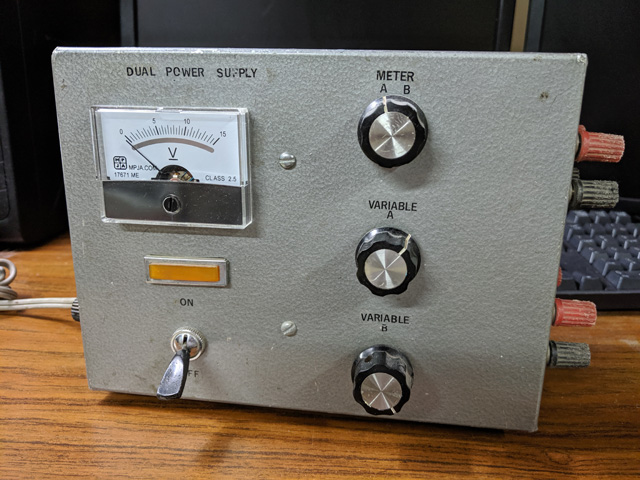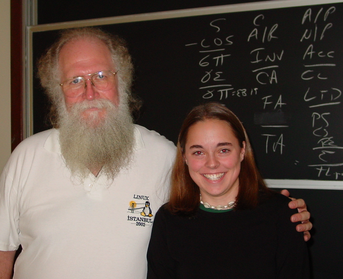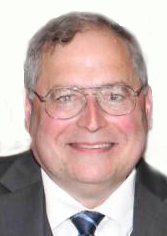
Rick Swenton
South Dennis, MA
"Any sufficiently advanced form of learning is indistinguishable from play." - Scott Snibbe
![]() After graduation from Hartford State Technical College I worked for Eastman Kodak Company for 23 years having various assignments from Field Engineer to Field Specialist to Regional Service Manager. I began my career as a Field Engineer supporting Business Imaging Systems equipment. I never supported consumer products like cameras and projectors but I had the great pleasure of working on some of the most sophisticated Kodak products in the industry. These products ranged from document scan-store-print systems, mainframe computer connected laser writer film printers, high speed document printing and publishing, professional photofinishing systems, hospital radiography systems and even blood analyzers. This interesting work spanned multiple technical disciplines like electrical, computer, mechanical, optical, chemical and even environmental. In a single day I could go from visually reading EBCDIC code on IBM Punch Cards, using a logic pen to troubleshoot a digital circuit, replacing worn bearings and shafts, rebuilding a thermostatic mixing valve, visually reading barcode on film, installing and configuring a mini computer system, developing film by hand with chemicals in a darkened customer lavatory, replacing a flow restrictor on a water line, installing silver reclamation devices on wastewater drains or replacing a laser. We would troubleshoot complex electronics down to the component level. The arsenal of tools in my car consisted of soldering iron, multimeter, logic pen and oscilloscope. To compliment the basic tool set I also needed thermometers, pressure gauges, spring scales, air flow meters, infrared sensors and torque meters.
After graduation from Hartford State Technical College I worked for Eastman Kodak Company for 23 years having various assignments from Field Engineer to Field Specialist to Regional Service Manager. I began my career as a Field Engineer supporting Business Imaging Systems equipment. I never supported consumer products like cameras and projectors but I had the great pleasure of working on some of the most sophisticated Kodak products in the industry. These products ranged from document scan-store-print systems, mainframe computer connected laser writer film printers, high speed document printing and publishing, professional photofinishing systems, hospital radiography systems and even blood analyzers. This interesting work spanned multiple technical disciplines like electrical, computer, mechanical, optical, chemical and even environmental. In a single day I could go from visually reading EBCDIC code on IBM Punch Cards, using a logic pen to troubleshoot a digital circuit, replacing worn bearings and shafts, rebuilding a thermostatic mixing valve, visually reading barcode on film, installing and configuring a mini computer system, developing film by hand with chemicals in a darkened customer lavatory, replacing a flow restrictor on a water line, installing silver reclamation devices on wastewater drains or replacing a laser. We would troubleshoot complex electronics down to the component level. The arsenal of tools in my car consisted of soldering iron, multimeter, logic pen and oscilloscope. To compliment the basic tool set I also needed thermometers, pressure gauges, spring scales, air flow meters, infrared sensors and torque meters.
Working for Kodak as a Field Engineer was one of the most rewarding positions in the world. This was especially true supporting the high-end systems located in the mainframe datacenters. See my Kodak Images of the Past page.
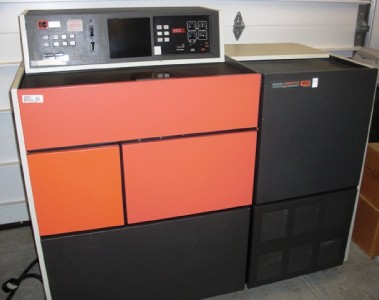
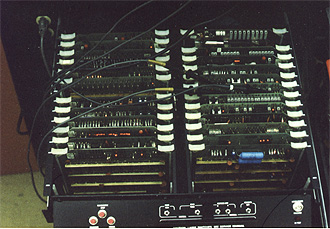
This is the Kodak Komstar Microimage Processor. It emulated IBM 1403 and 3211 printers found in the mainframe datacenters in the late 1970s through the 1990s. Instead of printing on paper this device printed on microfiche with a laser. The laser wrote characters directly on the film with moving mirrors scanning each line and each page. The film was processed (developed) only with heat. It used no chemicals or water. The microfiche came out of the printer ready to use. The Komstar was controlled by a Data General Nova 3/12 minicomputer. There were 30 or more logic boards. One model had an attached 1/2 inch tape drive. The other model directly connected to an IBM Mainframe computer through Bus and Tag cables. I would troubleshoot this system, including the internal minicomputer and IBM Channel Control Interface down to the component level. I actually carried just about every IC in my car trunk spare parts inventory. The IBM channel interface was on six circuit boards programmed as a state machine. We would troubleshoot using a long fold-out timing diagram that illustrated the channel protocol and watch the signals change on the LEDs.
Half way through my tenure at Kodak I was appointed to Regional Service Manager, eventually managing the same engineers in Connecticut with whom I worked for years. At one time I had team of of 43 field engineers reporting to me. The normal staff assignment was a little over 20.
When the Kodak Office Imaging division was sold to Danka I continued there for 3 more years where I managed a team of field engineers covering Connecticut and Rhode Island. My employment with these two companies totaled 26 years.
As a Regional Service Manager, one of the most fulfilling aspects of this job was development of people. This included not only technical proficiency but also development of people skills. In many ways, we spent more time fixing people than we did fixing equipment. It was an advantage being a highly technical manager of people. I understood the nature of their work, the customer needs, and how to best develop the engineers skills to succeed.
One of my most challenging and rewarding experiences was allowing several of my most valuable and talented people to leave my group so they could pursue career advancements by transferring into a different group with more interesting and challenging work. Only a few years later I found myself transferred into their group and became their manager again. It was so good to manage people who knew you sacrificed for them in the past and knew you would do it again.
My all time worst experience was downsizing staff. The first time, you let go your weaker performers. Later on you are forced to terminate some good people you would like to retain. It seems like that's all we did in the last half of the 1990s.
In the 1990s Danka Buisness Systems acquired hundreds of small copier companies with a passion. Then in 1996, Danka acquired Kodak Office Imaging, making Danka the biggest copier company in the world. I remained at Danka after they purchased my division from Kodak. This was one of the darker periods of my career. I had to perform even more staff reductions and work for a company that had a very different management strategy than Kodak. Danka became too big too fast.
The deal in 1996 required Kodak to manufacture and supply Danka with Kodak photocopiers and for Danka to purchase them along with repair parts. Danka was also required to pay Kodak $50M a year to develop new copiers. Two years later in 1998, Danka backed out of the agreement.
I had a hard time finding any honor, integrity or ethics in the existing Danka culture. For example, the Danka Guarantee was supposed to provide a replacement copier should yours not perform to expectations. But there were no such replacement copiers available to be had in any Danka warehouse. This caused me to explore other employment opportunities. That proved to be a great thing for me, moving on to Sun Microsystems. In 2008, eight years after I left Danka, Konica Minolta acquired Danka for $240M. That was 35% of what Danka originally paid for it twelve years before in 1996.
 After serving a three year sentence at Danka I accepted a position at Sun Microsystems as a Regional Technical Support Manager in the Connecticut office. In this position I was managing several Regional Systems Support Engineers from CT through Upstate NY.
After serving a three year sentence at Danka I accepted a position at Sun Microsystems as a Regional Technical Support Manager in the Connecticut office. In this position I was managing several Regional Systems Support Engineers from CT through Upstate NY.
After the Dot-Com crash, Sun began cutting back on staff and there were too many managers in my group. It was looking like I might have to assume additional responsibility in the New York City area. My manager offered me a position staying in CT which also prevented a downsizing in my group. In my new position I did not have any direct reports but it was a great job continuing with a great manager.
The new position had many names over the years. As a Systems Service Delivery Manager I was responsible for customer hardware and software support for several large national and international accounts in the enterprise computing environment. I supported the Sunfire High Availability systems such as F25K and M9000 along with Sun and Hitachi storage systems. Solaris and Java support were included. When Sun acquired StorageTek I began to support those customers and products as well. Those systems included robotic Tape Libraries like SL-8500 and virtual tape systems like Virtual Storage Manager (VSM) and Virtual Tape Library (VTL).
While at Sun I had the opportunity to work along side some of the smartest and nicest people. Like Kodak, it was very rewarding to work at Sun under Scott McNealy. The later years after Scott left were not so pleasant. It was sad that Sun's senior management was not capable of leading this company into the future. Like so many computer companies it was destined for a short life.
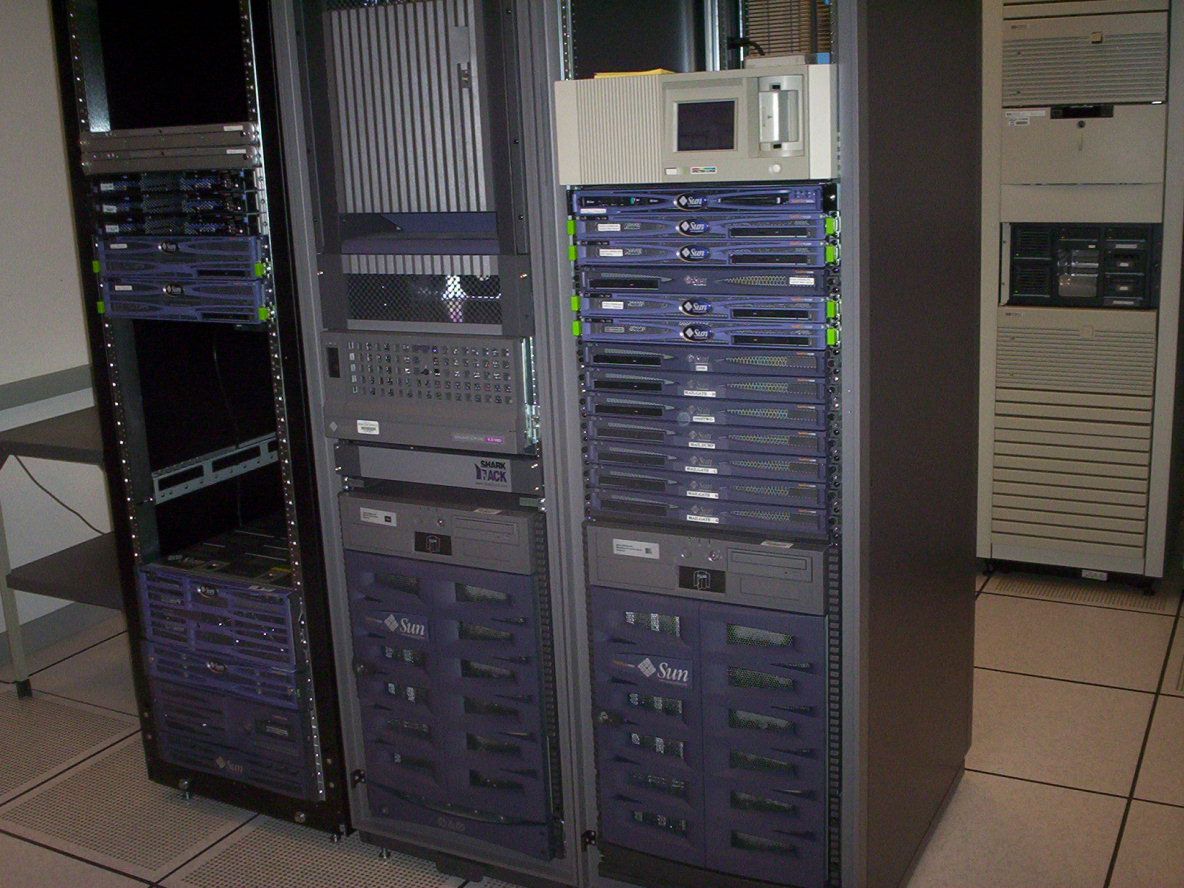
Various Sun Microsystems servers and storage at a customer site.
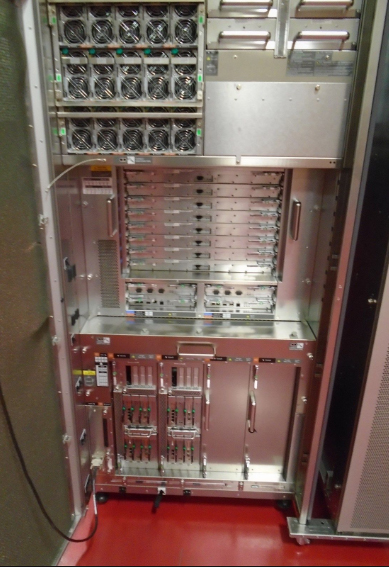
Sun Microsystems M9000
 When Oracle acquired Sun Microsystems in 2010, my position was retained. I continued at Oracle as a Systems Service Delivery Manager and later as a Principal Technical Account Manager. My peers and I continued to support a wide variety of hardware and software platforms from high-end servers, mainframe storage and open systems storage, big data storage and software from Solaris and Linux through all the Oracle database and applications products. Some of the high-end products I supported were Supercluster, Exatada, Exalogic and ZFS appliances. Through the years I supported some Pillar storage systems. Often this support was demanded after normal work hours and could span several days in a row. When our clients requested your presence in the "War Room" you knew they saved the "Hot Seat" for you.
When Oracle acquired Sun Microsystems in 2010, my position was retained. I continued at Oracle as a Systems Service Delivery Manager and later as a Principal Technical Account Manager. My peers and I continued to support a wide variety of hardware and software platforms from high-end servers, mainframe storage and open systems storage, big data storage and software from Solaris and Linux through all the Oracle database and applications products. Some of the high-end products I supported were Supercluster, Exatada, Exalogic and ZFS appliances. Through the years I supported some Pillar storage systems. Often this support was demanded after normal work hours and could span several days in a row. When our clients requested your presence in the "War Room" you knew they saved the "Hot Seat" for you.
Throughout my tenure at Sun and Oracle I was responsible for customer service delivery for several regional and international companies including Aetna, Blackrock, Citizens Financial, CSC/United Technologies, Mass Mutual, Nasdaq, Pfizer, Priceline, Travelers, Sony, The Hartford, and Wellington Management. Our computer systems were at the core of their day-to-day business that included Human Resources, Payroll, Research and Development, Manufacturing, Open Enrollment, Client Services, Financial and Investment Services, Enterprise Resource Planning Software (ERP), and or course, Oracle Database and Oracle Application software.
At most of these companies I was privileged to be associated with some incredibly smart and honorable people. From system administrators to vice presidents, I have been enriched by their technological depth and their ability to sustain a no-nonsense business relationship while still being good friends.
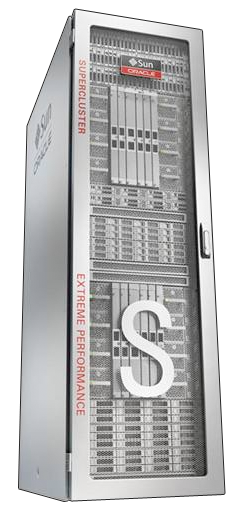 Oracle Supercluster
Oracle Supercluster
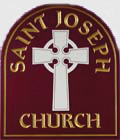
St. Joseph Church, Bristol, Connecticut
Before retiring and moving away I was active in my parish at St. Joseph Church in Bristol CT and within the Archdiocese of Hartford for 25 years.
- Catechist (Youth, Confirmation, Adult and OCIA)
- Workshop Presenter (music, liturgy, sacraments, pastoral council)
- National Association of Pastoral Musicians, Hartford Chapter Board Member
- Retreat Facilitator
- Liturgist
- President Emeritus, Pastoral Council
- Cantor, Vocal Choir, Handbell Choir
- Alternate choral conductor
- Published church music composer (Oregon Catholic Press, Passionist Music)
- Parish and School IT Director and Webmaster (25 year volunteer)
- 2006-2008 Archdiocese of Hartford Lay Ministry Formation Certificate, concentration in Liturgy, Class #33
- 2008-2014 Instructor, Archdiocese of Hartford Lay Ministry Formation Program - created and taught a new class on liturgy
- 2009 recipient of the Archdiocese of Hartford St. John Neumann Award for service to Catholic Schools
- 2014 recipient of the Archdiocese of Hartford St. Joseph Medal of Appreciation
- 2015 recipient of the Archdiocese of Hartford Catechist 25 year Service Award
The Second Vatican Council was convened in 1959 to bring the Catholic Church into the modern age. Concluding in 1964, the council brought significant changes to liturgical rites such as changing the language from Latin to English. It caused the introduction of a wide selection of new music to appear including hymns and sung parts of the Mass. By 1965, the changes were starting to roll out in my parish at St. Anthony in Bristol, CT. I was 12 years old and attending the parish school when the nuns commissioned me to go from classroom to classroom to teach the new church music. Armed with a toy plastic reed organ and a hymnal I taught the new songs to the 6th, 7th and 8th graders. Later, the nuns had me teaching the new music to the people in church before the Masses. In 2026 I will have celebrated 60 years in church music.
I really miss the friendship and collaboration of my former pastor and mentor, Msgr. Joe DiSciacca, my Director of Music, Jean Degan, and all my friends at St. Joseph Church and School. It was a great 25 years.
With the support and encouragement of Jean Degan at St. Joseph Church and Fr. David Cinquegrani at Holy Family Retreat Center in West Hartford, CT I have six original pieces of church music recorded on CDs at Holy Family, two recorded for the Music Quest CD accompanying the Small Christian Community program at the Archdiocese of Hartford and one piece published by Oregon Catholic Press. I am not a real composer. These pieces would not be possible without the help of my talented friends.

September, 2009. Composer and Workshop Presenter Rory Cooney with the board of the Hartford Chapter of the National Association of Pastoral Musicians. Front row, left to right, Father Joseph Devine, Toni Jardine, Jean Degan, John Swingler. Second row, left to right, composer Rory Cooney, Jeff Bingham, Rick Swenton.
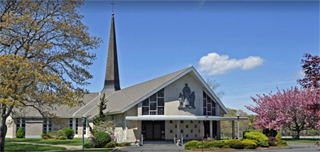
St. Pius the Tenth Church, South Yarmouth, Massachusetts
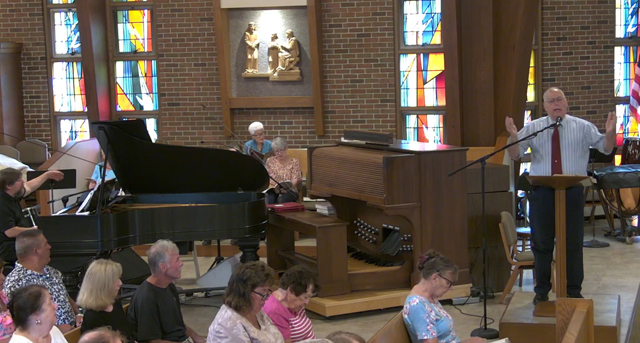
Today I am a member of the choir and a cantor at St. Pius the Tenth Church in South Yarmouth, MA. With the support and encouragement of my music director, Mark Girardin, we continue to write new music for use in our parish. I have been a frequent guest columnist for The Anchor, a periodical of the Catholic Diocese of Fall River, MA. I am appreciative of the support and encouragement I have received from my former pastor, Fr. Paul Caron and my current pastor, Fr. John Kelleher.
St. Joseph Church and School, Bristol CT
From around 1998 to 2018, in my spare time as a volunteer, I was the IT Director for a Pre-K through Grade 8 parochial elementary school and church. This included 45 desktop systems, 30 laptop systems, over 60 Chromebooks, assorted BYODs, Smart Boards, network and internet, 3 network printers, 3 network copiers, building-wide managed WIFI, remote access, content filtering and Joomla web sites. You can read the full story here.
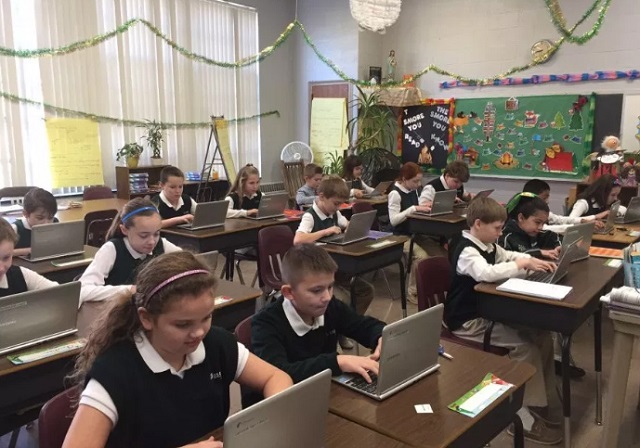
Chromebooks in the classroom at St. Joseph School.
 I am a hard core computer hobbyist with a focus on home automation and remote control of houses and radio equipment over the internet. I was a Linux user since 1993 having installed the Slackware distro as my first Linux instance. My very first computer was a homemade 8080 system with several 2K EPROMs and 2048 bytes of RAM. I programmed it by hand in machine language using programs from reference books and an EPROM Programmer I borrowed from work. I keyed several thousands of bytes into the programmer using its hex keypad. I had the computer interfaced to a Model 35ASR Teletype®. The software had an editor and assembler. I could write programs on the Teletype® in assembly language and save them on paper tape! My first real computer was the Heathkit H89 which I built in 1983. At that time I was trying to choose between the Heathkit or an IBM PC. I chose the Heathkit for several reasons. First, I would build it and know more about it. Second, it came with schematic diagrams. Third, it came with source code, even for the BIOS and ROMs. There was a very active community of which I became a contributing member. Although I no longer have any of this old equipment I can bring up CP/M and Wordstar 4 on my Android phones or tablets. As time went on I accumulated many different 8-Bit CP/M capable systems. I had the Heathkit H89 and H8 as well as a Kaypro-10 and even an Intertec Compustar. I built two Ampro Little Board systems. For the H8 I designed and built a new CPU board with a 4 MHz Z80 with onboard 64k static memory (two chips) and onboard serial ports. My single board board design replaced three boards in the H8 cabinet.
I am a hard core computer hobbyist with a focus on home automation and remote control of houses and radio equipment over the internet. I was a Linux user since 1993 having installed the Slackware distro as my first Linux instance. My very first computer was a homemade 8080 system with several 2K EPROMs and 2048 bytes of RAM. I programmed it by hand in machine language using programs from reference books and an EPROM Programmer I borrowed from work. I keyed several thousands of bytes into the programmer using its hex keypad. I had the computer interfaced to a Model 35ASR Teletype®. The software had an editor and assembler. I could write programs on the Teletype® in assembly language and save them on paper tape! My first real computer was the Heathkit H89 which I built in 1983. At that time I was trying to choose between the Heathkit or an IBM PC. I chose the Heathkit for several reasons. First, I would build it and know more about it. Second, it came with schematic diagrams. Third, it came with source code, even for the BIOS and ROMs. There was a very active community of which I became a contributing member. Although I no longer have any of this old equipment I can bring up CP/M and Wordstar 4 on my Android phones or tablets. As time went on I accumulated many different 8-Bit CP/M capable systems. I had the Heathkit H89 and H8 as well as a Kaypro-10 and even an Intertec Compustar. I built two Ampro Little Board systems. For the H8 I designed and built a new CPU board with a 4 MHz Z80 with onboard 64k static memory (two chips) and onboard serial ports. My single board board design replaced three boards in the H8 cabinet.
These were the days when if you acquired a hard drive that was not supported by your computer's BIOS you just settled in, got a cup of coffee, wrote some new code in assembly language and updated the BIOS.
My friends and I re-wrote the Heath BIOS for the H89. We converted it to Z80 instructions, improved efficiency and functionality, added expanded disk storage capacity, reduced its size and added ZCPR3/Z-System support. We eventually built Ampro and Micromint SB180 systems and modified hardware and software on those systems with a passion. At this time, overclocking meant going from 2 MHz to 4 MHz! That's Megahertz, not Gigahertz! Before the internet we used modems and the nationwide telephone network to connect to each others computers through what was called Bulletin Board Systems. This was at the time AOL and GEnie were emerging. Some of us subscribed to a service called PC-Pursuit. It was a service that allowed you to use your modem to dial other modems without having to pay the standard phone company toll charges for long distance calls. My first modem was a 110 baud acoustic coupled device. This was where you dialed the other computer manually with your phone. When the computer connected you placed your handset into the modem's rubber cups to couple the sound from the handset into the modem rather than being direct wired. It was very slow.
I was on the internet with a dial-up modem in 1988 using telnet, ftp, kermit and ELM email. I used the Mosaic Browser to surf the web in 1993. Because I had an early entry to the internet I had very short email addresses at work:
Besides articles on Ham Radio I authored many magazine articles published in REMark, the journal of the Heath/Zenith Users Group. (Bill Gates also had articles published there although we did not appear in any of the same issues.) I also authored articles for The Computer Journal and I was associate editor of the SEBHC Journal (Society of Eight-Bit Heath Computers) and a regular contributor. I also wrote for Pieces of Eight, a Hartford area 8-Bit Computer Club newsletter.
In 1989 I created an X10 home control software package for CP/M that used the X10 CP290 interface. This program used the standard modem software IMP/MEX serial port overlays which allowed the program to run on all the popular CP/M computers of the day. All these programming initiatives were accomplished in Z80 assembly language. In modern times my home is controlled by computer and accessed over the internet including by smartphone and voice control over Alexa. Lights, thermostats, locks, irrigation, security and environment are monitored and controlled through web pages, smartphone or Alexa. Home automation interfaces now include platforms based on Z-Wave, Arduino and Raspberry Pi. See my Home Automation Page.
Unfortunately I can't locate a copy of the source code for X10.COM but I did find a paper copy of the User's Guide. In its day X10.COM allowed 8-Bit computers using CP/M to provide a home automation system with many features. There were even X10 interfaces to provide dry contact relays and isolated contact closure or DC voltage inputs.
While working at Kodak I supported computer platforms from ADDS, Prime, Digital Equipment Corporation, Data General and Sirius (Victor). In those days, networking usually meant serial RS232 connections at 9,600 baud! Making a network cable involved soldering wires on DB-25 connectors to make serial cables and checking them with a breakout box. Hard drives were 14" Winchester style with "voice coil" stepping. These drives shook like a washing machine when they were in operation. They were usually in the 10 to 60 megabit capacities. Modems started at 110 baud and some were acoustic coupled. That means you took the phone handset and placed it into the modem's rubber cups which transferred the modem tone sounds in and out of the handset acoustically into the mic and speaker in the rubber cups.
I once had a Data General 1220 minicomputer at home interfaced to a Model 35 ASR Teletype®. The computer had 16k Core Memory. I had a Basic interpreter that I loaded from paper tape through the Teletype®. Since Core Memory is magnetic and not solid state, its memory was retiained after the computer was powered off. When you powered up the computer again, the program that was in the Core Memory just picked up where it left off. No battery or standby power was needed.
While working at Sun Microsystems I had the pleasure of exploring all kinds of Sun hardware at home with a fair amount of experience installing and configuring Solaris 6 through Solaris 10 and Sun-Branded SuSE Linux. I was the office geek with the Triple-Boot laptop that could boot Windows, Linux and Solaris. At one point in time I had a SunBlade 100. Sun Ultra-1, Ultra-5 and two Ultra-30 systems at home with an S1 Storage Array. I had them all "phoning home" under Sun's Net Connect to show customers how easy it was to monitor their systems and report problems.
In the old days I was an expert hacker of the Motorola Razr V3c, the Palm Treo 655p and the Nokia N770 and N800 Internet Tablets. I used to tether the Razr to the N800 over Bluetooth and the 1G cell network at 19.2kbps! In 2000 my daughter was using AOL Instant Messenger to converse with her middle school friends from my car using the 1G cell connection through my laptop. They never believed her that we were in the car driving around. I had the original Droid 1 with Cyanogen Mod 5! Today I continue to push the limits of current Android-based phones and tablets.
![]() I am a licensed Amateur Radio Operator and repeater builder. My callsign is WR1S (formerly W1RHS and WA1LMV) I hold an Extra Class License. In 1969 I obtained my Novice License as WN1LMV when I was 16. I held the call sign WA1LMV since 1970 when I received my General License. I started a Ham Radio club in high school and we installed a tower on the school roof. I was probably the only person who could walk on the roof during a school day without anyone becoming concerned. Can you imagine if anyone tried that today? Besides operating voice modes I also communicated with other hams using Teletype machines back in the 1970s. My first Teletype was a Model 15. [You Tube Video] Can you imagine using one of these in a rented apartment? I also had Model 19, 28ASR and 35ASR machines. [You Tube Video] Thanks to a good friend in the phone company, I had the special service tools and service manuals. I became proficient at repairing all kinds of problems. You know these are old because they print in upper case only!
I am a licensed Amateur Radio Operator and repeater builder. My callsign is WR1S (formerly W1RHS and WA1LMV) I hold an Extra Class License. In 1969 I obtained my Novice License as WN1LMV when I was 16. I held the call sign WA1LMV since 1970 when I received my General License. I started a Ham Radio club in high school and we installed a tower on the school roof. I was probably the only person who could walk on the roof during a school day without anyone becoming concerned. Can you imagine if anyone tried that today? Besides operating voice modes I also communicated with other hams using Teletype machines back in the 1970s. My first Teletype was a Model 15. [You Tube Video] Can you imagine using one of these in a rented apartment? I also had Model 19, 28ASR and 35ASR machines. [You Tube Video] Thanks to a good friend in the phone company, I had the special service tools and service manuals. I became proficient at repairing all kinds of problems. You know these are old because they print in upper case only!
I built and operated several VHF and UHF repeater systems throughout central Connecticut. Among those were the 28/88 machine WR1ABM in Avon, later moved to Bristol and the 75/15 machine WR1AFU in Burlington. I was one of the 6 Meter repeater pioneers in Connecticut with WR1AIB on the air on 52.01 / 53.01 in Burlington in 1978. I developed custom repeater control logic that evolved into a personally designed microprocessor based controller. I wrote the microprocessor software myself which consisted of 170 pages of Z80 assembly language instructions. See my Ham Radio Page. The source code for the controller is there too!
I also have a General Mobile Radio Service (GMRS) license - WQZQ564
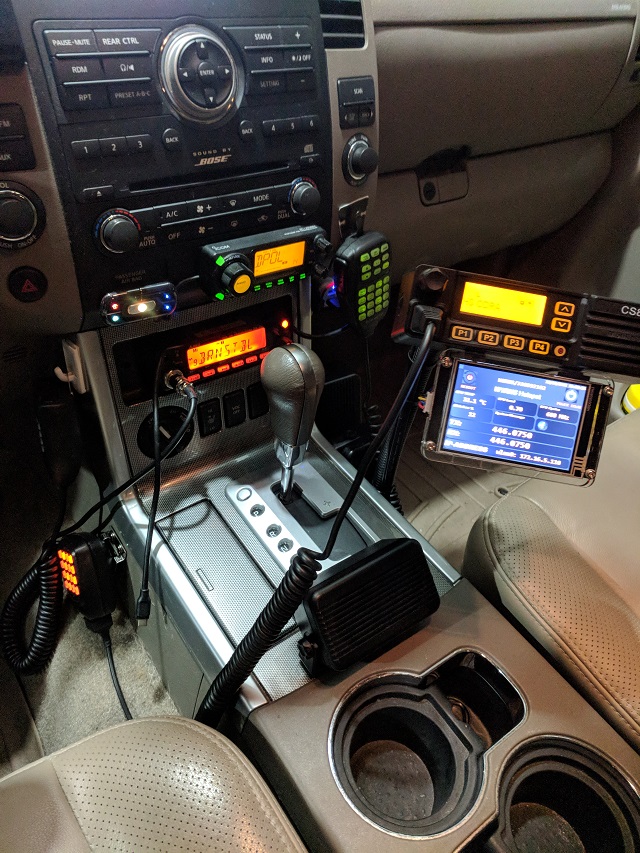
This is a picture of inside my car. See my DMR Radio in the Car Page.
Today my friends and I are using the latest digital communications technology. Here's a photo of the current Ham Radio station. This equipment can communicate with other Hams worldwide and locally. Unlike Ham Radio equipment of old, the modern equipment is smaller and has fewer controls on the radio. In fact, my best radio only has a power switch. Everything is controlled from the computer screen. My rescue dog, Gracie, lives under my desk. It was her choice. Sometimes we have to share. That is an original Civil Defense logo on the wall. Besides being affiliated with the local Civil Defense as a young ham radio operator I was certified in fallout shelter management and radiological monitoring. Back then we thought it was possible to survive a nuclear war. We could ... for about a week or two. Click on the photo for a larger image.
This is the other side of the workshop where all the fabrication and repairs happen. I fix stuff. This array of tools is a combination of my own tools plus those of my dad and my father-in-law. There's more on the garage wall and shed wall and there's more that I have given away. Power tools are hanging on the wall behind the left panel. Should any apparatus, electronic, mechanical, optical or chemical device become discombobulated, this is the place where the device can be expertly recombobulated. One day, a friend was astonished that I have two soldering irons on the bench. One has a medium tip. The other has a micro-point tip and is temperature controlled. He didn't know there were several more in storage as well as a soldering gun on the wall and a hot air rework station. Click on the photo for a larger image.
Some years ago I had been seen flying my AR Drone 2.0. I documented my exploits here and some of my flight videos are near the end of the article.
I specialized in Communications and Digital Systems. This was before the Personal Computer revolution. A classmate and I had exclusive use of the school's old IBM 1620 mainframe even though we were not computer science majors. The computer science majors were using the school's more modern (at the time) IBM 1130 system. The computer science department head was welcoming. He was happy that the old mainframe was getting some use. We were thrilled to have it all to ourselves.
This is the IBM 1620 Mainframe Computer. Not shown are the Card Reader, Printer and Disc Drive. The 1620 used a variable decimal (BCD) word length and had core memory. The memory varied from 40k to 60k! That's only enough to save about 25 pages of plain text documents. The associated IBM 1311 disk drive used an unsealed open multi-platter disc that only held 2 mb of data! That disc would only hold about two 3.5" floppy disks worth of data. Notice that the computer's console is a regular typewriter with a movable carriage. This was before the IBM Selectric typewriter was introduced. To change from Fortran to Cobol you had to swap a disc pack in the disc drive. The disc drive was the size of a washing machine. We didn't know Cobol so we wrote programs in Fortran. Imagine writing a program to plot a waveform on continuous form paper using only printable characters. We managed to get the 1620 to play Christmas tunes as buzzing interference noise on a local AM radio.
Because of my Ham Radio background I was the only student who could still build working projects in the lab using vacuum tubes. The instructors frequently had me replicate one of the solid state lab sessions with vacuum tubes just for fun. One of the very early lab sessions was to built a Hartley Oscillator with one transistor running at 1 mHz. The first person to produce a signal on the professor's AM table radio would win some kind of prize. Then the professor sarcastically said, "And for Rick, he will build his with a vacuum tube." The lab's old tube fixtures were deep in the back room gathering dust. I found an HV power supply with 6v filament power and a 9 pin tube socket. Lucky for me, I found a 12AT7 tube in a box of random parts. I got my oscillator running and heard the carrier in the radio. Of course, all you could hear is that my oscillator quieted the radio's background noise as I tuned it to 1 mHz. Next, I grabbed an HP audio oscillator with a 600 ohm transformer output. I plate modulated my oscillator with a 1 kHz tone. Now my oscillator was obviously heard on the radio with the audio tone and I won the contest. My peers did not know that many of their oscillators were actually working. They were expecting to hear a tone in the radio like mine but did not modulate any tone themselves. The professor just shook his head and regretted giving me the challenge. Some time in the 1980s the Connecticut State College system decided that HSTC was not attracting enough students. Instead of creating interest through publicity efforts or high school recruitment initiatives the experts decided to have the professors "dumb-down" the curriculum. This caused an influx of new students who were either not passionate about technology or did not have the essential background to keep up with the pace of high-tech learning. In order to continue to attract these students, the professors were advised by the administration that failing existing students was not an option and was bad publicity. In 1992, HSTC was forced to close its facilities and merge with Capital Community Technical College which eventually was renamed Capital Community College. Unlike HSTC, Capital Community College courses are Registered Nursing, Social Work, Early Childhood Education, Emergency Medical Technology and General Studies. Gone are the Electrical, Computer, Mechanical, Civil and Nuclear Technology courses. The closure of HSTC was partly caused by withdrawl of legislative funding. I wonder what happened to the nuclear reactor. |
Publications
Over the years I have authored articles about computers, ham radio and home automation for several national magazines. Besides these articles I was an Associate Editor of the SEBHC Newsletter (The Society of Eight-Bit Heath Computers) and was a regular contributor. More recently I have been a frequent guest columnist for The Anchor, a periodical of the Catholic Diocese of Fall River, MA.
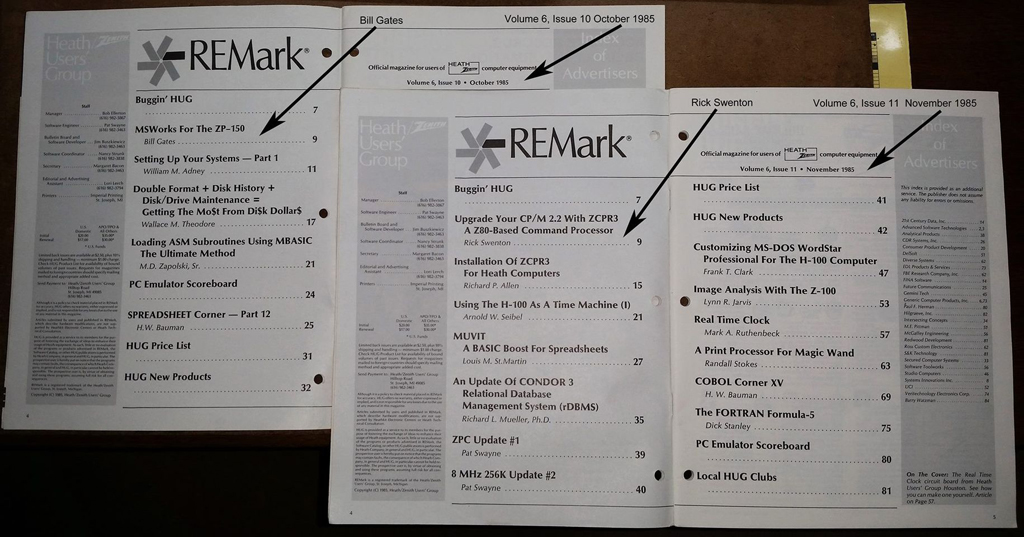
Bill Gates and I appeared in REMark, a magazine of the Heath/Zenith Users Group. Bill appeared in the REMark October 1985 issue. I appeared in the following month, November 1985. So close! Notice we both got top-billing in our respective month's publicaiton. I had a total of four major articles published in REMark.
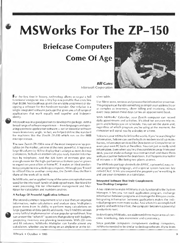 |
REMark / Heath Zenith Users Group
|
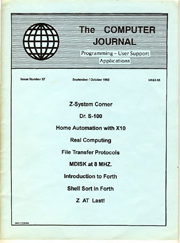 |
Home Automation with X10 A definitive report on home control with CP/M Systems and includes my Z80 assembly language program X10.COM for home control under CP/M. The entire TCJ Archive is here. |
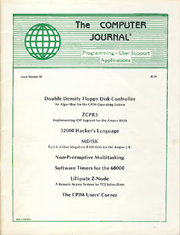 |
ZCPR3 IOP for the Ampro Little Board Implementing ZCPR3 IOP support for the Ampro and featuring NuKey, a keyboard redefinition IOP. The entire TCJ Archive is here. |
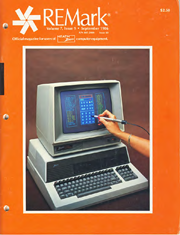 |
Z-System to Boot Product review of Analytical Systems bootable Z-System, an upgrade to replace CP/M 2.2. |
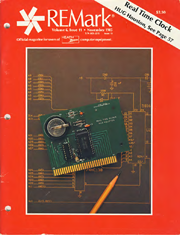 |
Upgrade your CP/M 2.2 with ZCPR3, A Z80-Based Command Processor ZCPR3 is a replacement for CP/M 2.2 Console Command Processor which adds many Unix-like commands to CP/M. |
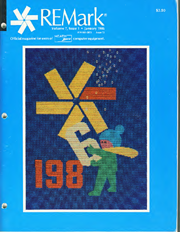 |
Z-System is a complete replacement for CP/M 2.2 and includes the ZCPR3 CCP replacement and ZRDOS BDOS replacement. |
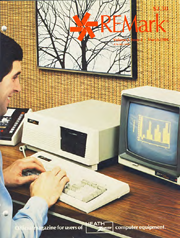 |
I/O Port Baud Rate Programmer March 1984
8080 Assembly language program to dynamically and simultaneously set H89 CPU and H19 terminal baud rates. |
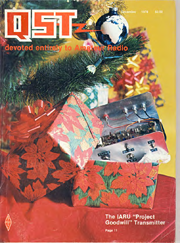 |
Give Your Repeater Some Identity Build a digital Morse Code Identifier for your repeater. |
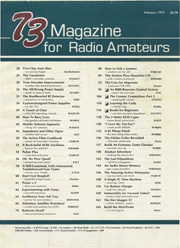 |
Tone Decoder Improvements Construction project for a digital signal conditioner for processing DTMF telephone tones using discrete NE567 tone decoders. The entire 73 Magazine Archive is here. |




